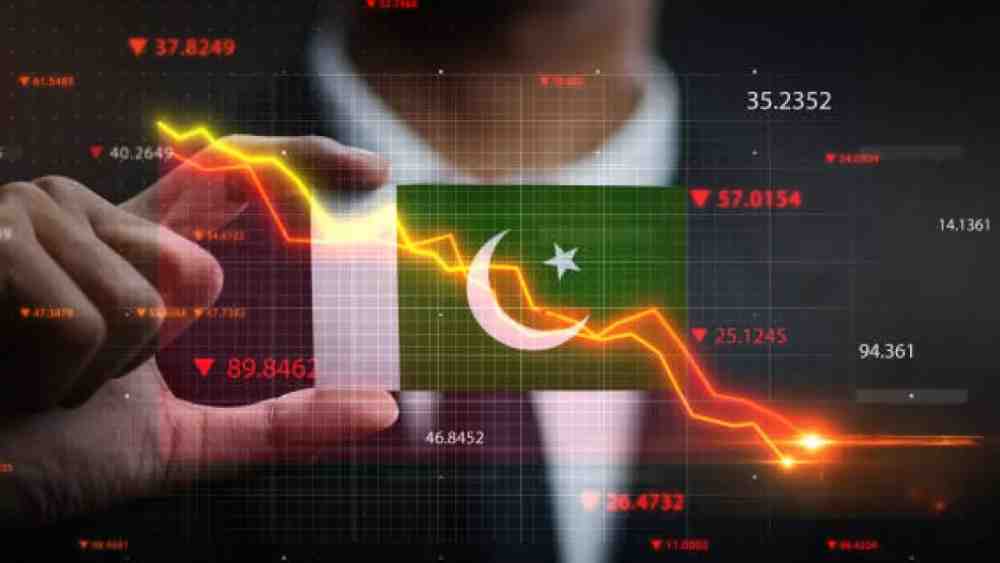Pakistan’s Economic Challenge: Navigating the IMF Bailout and Beyond
Pakistan’s recent securing of a $3 billion short-term financial package from the International Monetary Fund (IMF) has provided some much-needed relief to the country’s acute balance of payments crisis. However, this bailout is just one piece of a complex puzzle that Pakistan must solve to stabilize its economy. This article delves into the key aspects surrounding Pakistan’s IMF bailout and its broader economic challenges.
The IMF’s Lifeline:
Pakistan’s $3 billion Stand-By Arrangement with the IMF, approved on July 12, 2023, was a vital lifeline. With foreign exchange reserves at a critically low level of $2.9 billion, the lowest in nine years, the country was teetering on the brink of a default. The IMF bailout was a last-minute rescue, preventing a catastrophic financial collapse.

Inflation Woes:
Pakistan faced a severe inflation crisis in mid-2023, with the inflation rate reaching a record-high of 38% for two consecutive months. This crisis eroded the purchasing power of citizens and created economic instability. The IMF’s intervention aims to address these inflationary pressures.
Critiques of IMF Lending Practices:
The IMF’s lending practices have come under scrutiny. Critics argue that the conditions attached to IMF loans, such as fiscal austerity and high-interest rates, can be counterproductive for impoverished countries like Pakistan. These conditions have sparked ongoing protests and strikes within Pakistan, highlighting the discontent among the population.
Government’s Populist Moves:
In an attempt to boost popularity with voters, Pakistan’s government increased energy subsidies and depleted foreign exchange reserves. While these measures might have temporarily appeased the public, they worsened the economic crisis and played a role in necessitating the IMF bailout.

A Multifaceted Approach:
The $3 billion IMF bailout, while significant, is not seen as a panacea for Pakistan’s economic woes. The country is in talks with China and Saudi Arabia to secure an additional $11 billion in funding to avoid a full-blown economic crisis. These negotiations are ongoing, and their success will determine Pakistan’s economic trajectory.
IMF’s Conditions and Structural Reforms:
The IMF’s conditions for the bailout include harsh structural policy reforms. These reforms, while necessary for long-term economic stability, have faced resistance within Pakistan. The government must navigate these challenges to implement the IMF’s requirements successfully.
The U.S. Role:
The U.S. has played a significant role in brokering the IMF loan for Pakistan, with reports suggesting a secret arms deal with Ukraine was used to aid the bailout. However, the Pakistani Ministry of Foreign Affairs has vehemently denied these claims, labeling them as “baseless and fabricated.”

Political Implications:
Pakistan’s military has faced criticism for using the IMF bailout to postpone elections and deepen a crackdown on political opponents. Former Prime Minister Imran Khan’s arrest has raised concerns about the misuse of the funds.
Long-Term Solutions:
While the IMF’s $3 billion bailout provides immediate relief, Pakistan needs to focus on long-term solutions. The country’s talks with China and Saudi Arabia for additional funding underscore the need for a comprehensive economic strategy that extends beyond short-term fixes.
Macro-Stability Focus:
The IMF’s conditions for the bailout emphasize the importance of strengthening macroeconomic stability. This includes measures to address Pakistan’s power sector, which has been a persistent concern.

Budget Revisions:
As part of the agreement with the IMF, Pakistan’s government has revised its annual budget. This includes raising taxes and cutting spending, measures aimed at addressing the country’s fiscal challenges.
Pakistan’s IMF bailout is a critical step in averting an immediate economic catastrophe. However, the road to economic stability is fraught with challenges, including addressing inflation, implementing structural reforms, and securing additional funding. The IMF’s conditions and the role of foreign actors add complexity to the situation. Pakistan’s leadership must carefully navigate these waters to put the nation on a path of sustainable economic growth and stability.
